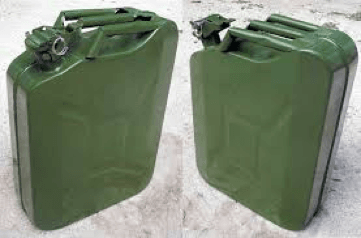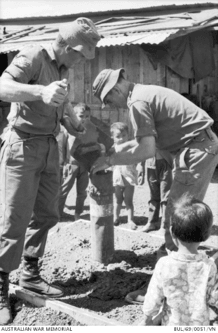
This ANZAC day, we thought we would have a look at the average water consumption per soldier and how they gained access to and received water during previous wars.
The Water Consumption of the Average Soldier
The water consumption per soldier changed with each war – as did their method of carrying water as well as their water allocation.
During World War One (WWI) the daily allowance of potable water (water that is drinkable) was 1 gallon – or 4.54 litres – per man. This water was to be used for drinking, washing, and cooking. The allowance for horses, mules, and donkeys was 5 gallons a day – or 22.7 litres.

Throughout World War Two (WWII) fighting men (those on the front line) drank up to 3 quarts (2.8 litres) per day. It has been estimated that soldiers carried up to 18.9 litres per day for drinking, washing and cooking.
During the Vietnam War water consumption and allocation varied widely depending on the soldiers’ duties. On average, the soldiers carried between 3-5 litres of water a day. Soldiers carrying out ‘harder’ duties, however, were allocated approximately 10 litres a day.
Water Re-Supply
The way soldiers received water varied from war to war. From having to look for water themselves, to water being shipped in, water re-supply was a hard and un-safe task.
World War One (WWI)
During WWI railways were used to transport all supplies – including water, food, weapons, and materials. The British also requisitioned civilian property such as trucks and buses to move supplies.
Closer to the front lines, horse and mule would drop supplies off at road-heads. Soldiers would then carry them to the trenches and distribute the supplies. Water was transported in petrol cans and then purified with chemicals when it reached the front line.

World War Two (WWII)
The First Armylanded in France in an area devoid of potable water. Combat engineers constructed water holding tanks, purifiers, showers, latrines (toilets), and piping/plumbing to supply other areas. Water had to be shipped in and engineers had the task to supply water to the troops.
The First Armylanded in France in an area devoid of potable water. Combat engineers constructed water holding tanks, purifiers, showers, latrines (toilets), and piping/plumbing to supply other areas. Water had to be shipped in and engineers had the task to supply water to the troops.
Vietnam War
Where safe, Australian Army engineers had to drill for water as re-supply was not always possible. Infantry men were expected to find their own water in the field and treat it for consumption. This however increased the risk of gastrointestinal infection amongst dismounted troops.
Water supply by helicopter or another vehicle during the Vietnam War was discouraged unless it was carried out during ration re-supply.

Water consumption and re-supply to soldiers has changed vastly throughout the years, and will change for years to come. The equipment used for water carrying has also changed, as well as the quality of the water that is supplied to our troops.
A massive thank you to those – past and present – who have served our country.
Lest We Forget.

Recent Comments